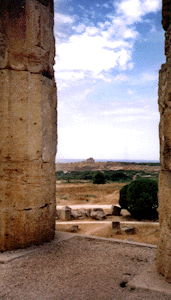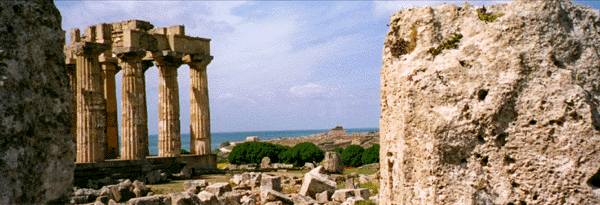The antica citta di Selinunte without a doubt has to be one of the greatest sites of Grecian antiquity.
This colony was founded in 7th Century BC by settlers from Megara Hyblaea, and enjoyed over two centuries of prosperous times, thanks to prudent government practices.
For a long time this colony was aligned with Carthage, in hope of gaining enough support to beat their rival, Segesta. However this scheme backfired when the Carthaginian Hannibal destroyed the city in 409 BC.
Hannibal killed over 16,000 citizens of Selinunte, and captured another 5,000. When the prisoners pleaded with him to save the city for a large some of money he agreed, only to sack the temples and pull down the city walls after receiving the money.
After he left, the people of Selinunte struggled to rebuild their city, and against the odds survived until the Second Punic War when the town was razed to the ground.
The town lies much as it was when it was razed, you can easily see the streets, and foundations of houses and businesses. It is easy to garner a good insight as to the complexity of their daily life through the remaining structures.
As so much time passed since the final destruction of Selinunte and modern history, archeologists are unsure as to whom the temples were dedicated to, and have thusly named them in an alphabetical order.
The entrance fee for this site is 4,000 lire, which includes both sites. Expect a fair amount of walking in order to take it all in, and good shoes are a definite must. Pack a picnic!

The Antica citta di Selinunte in springtime. Visible is Temple "C"
(April 1999)
Temple "E" in the Antica citta di Selinunte (June 1999)
Sacrificial alter in temple "E" - bring on the virgins! (June 1999)
A typical street scene in Selinunte (June 1999)
The Antica citta di Selinunte (June 1999)
Columns of temple "E" (June 1999)
Temple "E" in Selinunte (June 1999)


Looking at Temple "F" from the ruins of Temple "G"(April 1999)
The ruins of Temple "C" in the Antica citta di Selinunte (June 1999)
Temple "E" (June 1999)